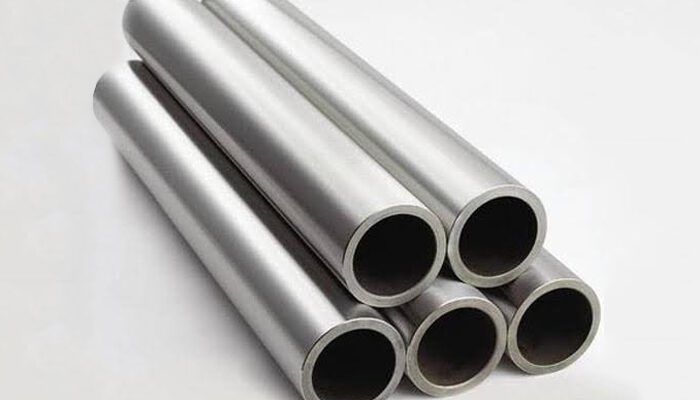
Nickel is a complex, silvery-white, and lustrous naturally-occurring metallic element. It is present abundantly in the earth’s crust its core symbol is (symbol Ni, atomic weight 58.71, atomic number 28). Nickel alloys are highly versatile and valuable and serve important applications in a wide range of industries. They exhibit several desirable properties, including excellent corrosion resistance, high strength and toughness, and superior elevated temperature properties. Nickel alloys easily with most metals, including copper, iron, chromium, and molybdenum. Based on the percentage of nickel and other metal elements, different types of nickel alloys are available that serve varied uses.
Nickel alloy 400 tubing is in high demand in various industry types. Alloy 400 (UNS N04400) is a nickel-copper alloy. The copper-nickel (CuNi) alloy typically contains copper and nickel alloyed with other strengthening elements, like iron and manganese. Since it displays remarkably corrosion-resistant, it finds use in naval and marine applications. Alloy 400 is a single-phase, solid-solution nickel-copper alloy. It can endure a corrosive environment over temperatures ranging from sub-zero to 800°F.
The chemical composition of alloy 400 includes the following:
- Nickel: 63-70%
- Copper: 28-34%
- Iron: 2.5%
- Manganese: 2%
- Silicon: 0.5%
- Carbon: 0.3%
- Sulfur: 024%
Common Trade Names
- MONEL® alloy 400
Other Designations
Nickel alloy 400 can also go by other designations, including:
- ASTM B127
- AMS 4544
- ASME SB127
- QQ-N-281
Physical Properties of Alloy 400
- Density: 8.80 g/cm³
- Melting Range: 1300 – 1350 °C
- Specific Heat Capacity: 427 J/kg.°C
- Hardness: 60-80 HRB
- Electrical Resistivity: 0.511 µΩ.m
- Poisson’s Transit: 0.32
- Curie Temperature: 21-49°C
Applications of Alloy 400
Alloy 400 serves a wide variety of applications, including:
- Packed columns
- Brine heaters
- Pressure vessels and reactors
- Salt production equipment
- Heat exchangers
- Pipework and pipe spools
- Pump and valve components
- Steam generators
- Crude petroleum stills
- Marine components
- Water treatment plant
Since alloy 400 has high corrosion resistance, chemical processing plants use it to build piping systems, pump shafts, and seawater values, among other products. Its strength, durability, and formation capabilities render it ideal for chemical and water tanks. It also finds use in heating applications like boiler feedwater heaters, de-aerating heaters, and heat exchangers as it can resist salts, caustic alkalis, and corrosive environments.
Fabrication and Heat Treatment
Manufacturers can machine Nickel alloy 400 at standard rates with the help of conventional machine tools.
- Hot Working: One can perform hot working of nickel alloy 400 at temperatures 649-1177°C (1200-2150°F).
- Cold Working: Nickel alloy 400 can be cold-worked with all cold fabrication methods.
- Welding: The conventional weldingtechniques like plasma arc welding, gas metal arc welding, shielded metal arc welding, and gas tungsten arc welding are suitable for welding Nickel alloy 400.
Resistance to Corrosion
Alloy 400 exhibits corrosion resistance in various reducing media. It is one of those few alloys that can endure contact with fluorine, hydrofluoric acid, hydrogen fluoride, or any of their derivatives. Alloy 400 can optimally resist various forms of sulfuric and hydrochloric acids under reducing conditions. It can resist corrosion caused by warm seawater and steam at high temperatures. Due to its high Nickel content, it can effectively resist stress corrosion cracking. It is virtually immune to chloride-ion stress corrosion cracking in certain environments.
To Conclude:
These are a few things you should know about Nickel alloy 400. It continues to be one of the most widely used corrosion-resistant alloys that are commercially produced.

